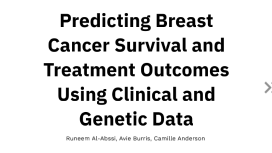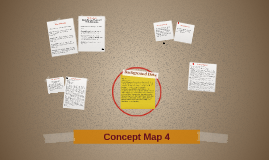Background Data
Transcript: Concept Map 4 Acetaminophen/1000mg/q6h/oral/for pain Bisacodyl/10mg/once a day/rectal/for constipation d/t required bedrest Enoxaparin/36mg/q12h/sub-q/to prevent clot formation d/t bilateral below the knee casts requiring bed rest Fluoxetine/30mg/nightly/oral/to treat depression Labs & Results Age: 15 Allergies: NKA Medical Diagnosis/Reason for admission: Bilateral ankle fracture d/t attempted suicide jump out of 2nd story windwo after ingesting "handful of corcidin." Reported loss of consciousness upon fall. Pertinent medical and surgical history: H/o depression, anxiety. Suicide attempt in March. Raped a few years ago-mom not aware (does not want mom to know). This will affect patient care and education because if the patient lacks good mental health, she is less likely to adhere to given instructions and more likely to continue to perform self-inflecting harm. Birth data: No data available. Erickson's Developmental Stage: Identity vs Role Confusion This is currently affecting the patient because she is trying to find where she fits in the world and displays confusion as to what her role is in this moment in time. Psychologist Erik Erikson said that this exploration is part of a psychosocial crisis, where adolescents have to find themselves otherwise if they stay in role confusion, they will feel dissatisfied and have trouble figuring out what they want out of life- which is what this patient has struggled to find. Background Data Physical Assessment Medications (Name/Dosage/Frequency/Route/Rationale) Nursing Diagnosis 1. Risk for self-harm r/t previous history of prior suicide attempt Goals: -Pt will not harm self during duration of hospital stay and upon follow-up visit -Pt will maintain connectedness in relationships for 2 weeks following discharge Interventions: -Be alert for warning signs of suicide: making statements such as, “I can’t go on,” “Nothing matters anymore,” “I wish I were dead”; becoming depressed or withdrawn; behaving recklessly; getting affairs in order and giving away valued possessions; showing a marked change in behavior, attitudes, or appearance; abusing drugs or alcohol; suffering a major loss or life change. -Question family members regarding the preparatory actions mentioned.Communicate the degree of risk to family and caregivers; assess the family and caregiving situation for ability to protect the client and to understand the client’s suicidal behavior. Provide the family and caregivers with guidelines on how to manage self-harm behaviors in the home environment.. -Before discharge from the hospital, ensure that the client’s parent has a supply of ordered medications, has a plan for outpatient follow-up, has a caregiver who understands the plan or is able and willing to follow the plan, and has the ability to access outpatient treatment. 2. Powerlessness r/t physical limitations and dependence on others to meet basic needs Goals: -Pt will demonstrate increased feelings of control over his/her situation -Pt will participate in self-care activities within physical limitations and prescribed activity restrictions Interventions- -Assess for behaviors that may indicate feelings of powerlessness (e.g. verbalization of lack of control over self-care or current situation, anger, irritability, passivity, lack of participation in self-care or care planning). -Evaluate client's perception of current situation, strengths, weaknesses, expectations, and parts of current situation that are under his/her control. Correct misinformation and inaccurate perceptions and encourage discussion of feelings about areas in which there is a perceived lack of control. -Support realistic hope about probability of future independence and ability to resume usual roles and lifestyle. -Include client in the planning of care, encourage maximum participation in the treatment plan, and allow choices whenever possible to promote a sense of control. -Encourage significant others to allow client to do as much as he/she is able so that a feeling of independence can be maintained. Ackley, B., & Ladwig, G. (2014). Nursing diagnosis handbook. Maryland Heights, Mo.: Elsevier. All immunizations are up to date. Pt denied flu vaccine before discharge. From 10/25- last day they were recorded -RBC: 3.42 (4.1-5.3)/ Low d/t recent bilateral ankle surgery and current Lovenox medication -Hematocrit: 27.7% (35-45)/ Low d/t recent bilateral ankle surgery and current Lovenox medication -Hemoglobin: 9.0 (12-15)/ Low d/t recent bilateral ankle surgery and current Lovenox medication -Platelets: 598 (150-450)/ High d/t inability to excercise as a result of bilateral below the knee casts requiring bed rest Social Work Services: Mom wanted to be called by a social worker because she had questions regarding discharge since she will not make it before then. -Pulse: 89 bpm/ 2+(Normal)/ Location- Radial, RUE -O2: 99% intermittent, room air -RR: 17 per min -BP: 109/53 (L arm sitting) -Temperature: 36.9 C -Pain: 0/10 (Numeric Scale) -General

















